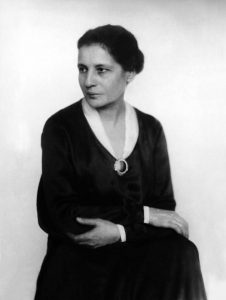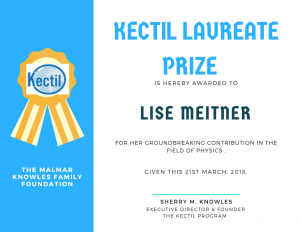WOMEN IN SCIENCE
“Science, for me, gives a partial explanation for life. In so far as it goes, it is based on fact, experience and experiment.” – Rosalind Franklin
WOMEN WHO DESERVED A NOBEL PRIZE IN SCIENCE
This week Kectil honors women who made significant contributions to science. I always wondered why there have been so few women in high level science who made fundamental discoveries and so I went on a quest to understand. When one woman makes a large contribution to a field, she becomes a role model for others females in the next generation. If her contribution is pushed aside, we not only lose sight of her accomplishment, but we lose a critical role model for females in the future. It has a double negative effect.
Yesterday we highlighted Emmy Noether, one of the most brilliant creative mathematicians of her day (and probably to this day) who proved, among other things, that the total energy of an isolated system remains constant and is conserved over time, and thus equating energy and time (can you explain that?? Haha). She worked closely with Albert Einstein and her work was relevant to Einstein’s Law of Relativity. Mathematicians at her peer level received Nobel Prizes, however, not only did she not received the Nobel, she had a hard time getting and keeping a job and still today almost no one has ever heard of Emmy Noether. We hope to change that.
Today we focus on a second female who likewise made a fundamental contribution to quantum physics, and in particular to nuclear fission. We selected two females in same field to highlight, because most would agree that quantum physics is among the hardest subjects there is. If a woman can contribute at the highest level to that field, she can be at the top of any field.
Let’s learn about Lise Meitner.
Lise Meitner- Austrian-Swedish Physicist

When Otto Hahn was awarded the Nobel Prize in Chemistry in 1944 for the discovery of fission, he “forgot” to add the name of one of the co-discoverers to his publication, Lise Meitner.
Born in Vienna in 1878, she grew up in an intellectual family and studied physics at the University of Vienna. She was the second woman to receive a higher degree in Austria. After receiving her doctorate degree, she worked with Otto Hahn and they collaborated closely, studying radioactivity, with her knowledge of physics and his knowledge of chemistry. In 1918, they discovered the element protactinium.
In 1923, Meitner discovered the radiationless transition known as the Auger effect, which is named for Pierre Victor Auger, a French scientist who discovered the effect two years after she did. She was the first woman to become a full professor of physics in Germany. After Austria was annexed by Germany in 1938, Meitner as a Jew was forced to flee Germany for Sweden.
After the neutron was discovered in 1932, scientists like the famous Enrico Fermi started using neutrons to hit the nucleus of an atom and investigate what happened. Meitner and Otto Hahn, who had collaborated for years, also started doing so. She was the physicist and he was the chemist. Hahn and Meitner met secretly in Copenhagen in November 1938 to plan a new round of experiments. At her suggestion, Hahn and Strassman performed further tests on a uranium product they thought was radium. When they found out that it was barium, they published their results in Nature Magazine in January 1939.
Hahn and Strassman didn’t understand what was happening. Hahn told Meitner about it, and then Meitner and her nephew Frisch conceptualized and worked out the mathematics of the uranium split and why it would release energy, based on Einstein’s formula E=mc2, opening the door to nuclear reactions, nuclear energy and the atom bomb. Meitner and Frisch named the process “fission’ after binary fission which is how a cell divides.
Hahn published separately from Meitner and did not mention that it was Meitner and Frisch figured out the process, which unlocked the door to the science. When he received the Nobel Prize, he did not mention her.
The discovery and understanding of fission led other scientists to prompt Albert Einstein to write President Franklin D. Roosevelt a warning letter, which led to the Manhattan Project. In 1944, Hahn was awarded the Nobel Prize for Chemistry for his research into fission, but Meitner was ignored. The Nobel mistake, never acknowledged, was partly rectified in 1966, when Hahn, Meitner, and Strassman were awarded the Enrico Fermi Award. On a visit to the U.S. in 1946, she was given American press celebrity treatment, as someone who had “left Germany with the bomb in my purse.” Meitner retired to Cambridge, England, in 1960, where she died October 27.
In 1992, element 109, the heaviest known element in the universe, was named Meitnerium (Mt) in her honor. Many consider Lise Meitner one of the “most significant woman scientist of the 20th Century” and “the mother of nuclear power”.
Today, we award Lise Meitner KECTIL LAUREATE Prize for her groundbreaking contributions in the field of Mathematics and Physics.

